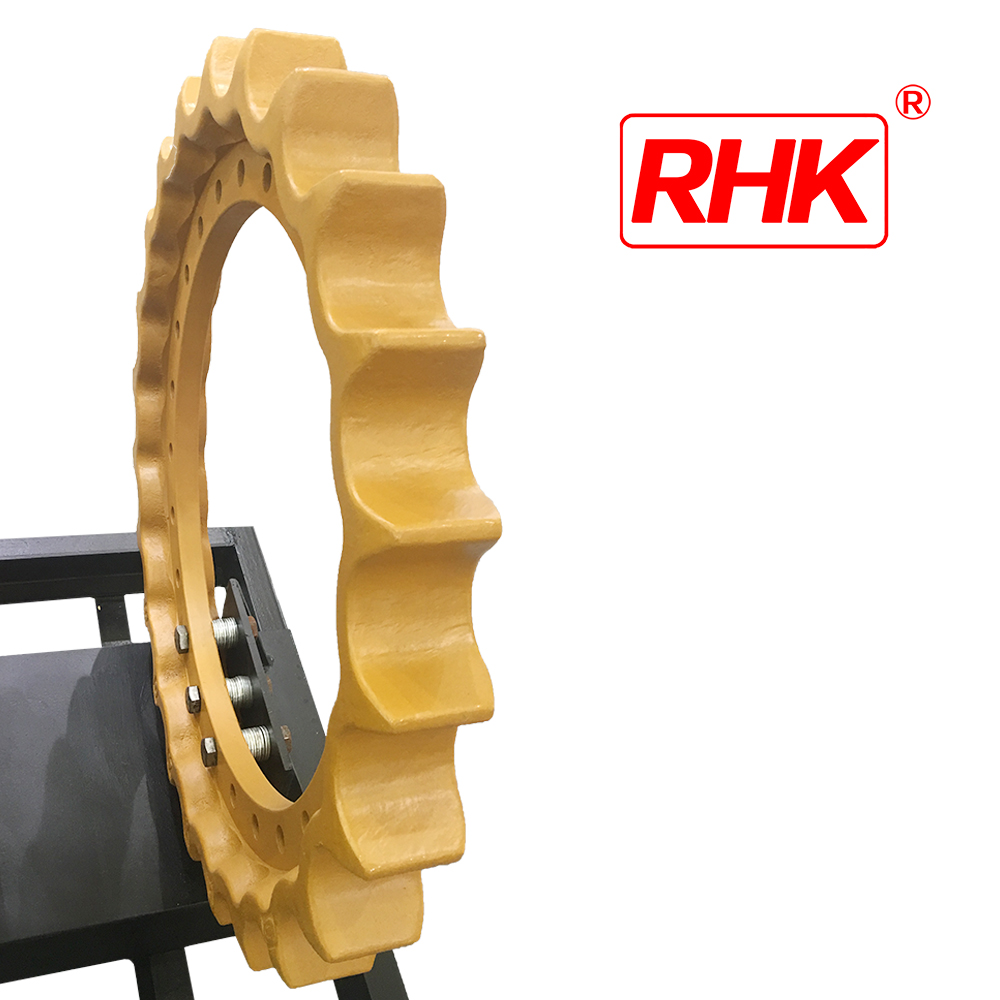Whether you have a compact excavator like the EX30 or a mid-size machine like the EX500, the sprockets that transmit power to the tracks play an important role in the overall performance of your excavator. Using the correct size and type of sprockets can optimize power, speed, traction and track life for your specific application.
Drive Sprockets Play An Important Role In The Undercarriage Of An Excavator
- Drive sprockets are toothed wheels that are attached to the drive shaft or final drive of the excavator. They engage with the track chains and propel the undercarriage.
- As the drive sprockets turn, they pull on the track chains and cause the track rollers and undercarriage to move forwards or backwards. This propels the upper body of the excavator.
- The teeth of the drive sprockets mesh with the bushings or pins on the track chains. The mating of these surfaces transfers torque from the sprocket to the chain.
- Drive sprockets are typically made of hardened alloy steel for strength and durability. The teeth are specially designed and spaced to properly engage the track chain.
- Larger and heavier excavators require larger drive sprockets with more teeth to provide adequate torque and grip the track chains.
- Due to the high load and stress they experience, drive sprockets eventually wear out and need to be replaced. Ensuring a precise fit with the track chain is important for optimal performance.
- Genuine OEM or manufacturer-approved drive sprockets are engineered specifically for an excavator model. They are designed to mesh properly with all the other undercarriage components for that machine.

EX500 Sprocket Options
The EX500 is powered by a robust 74 hp engine, so it’s important to match the right sprockets to maximize this power. Larger-toothed sprockets provide more torque and grip on the tracks but at a lower speed. Conversely, sprockets with fewer teeth provide higher ground speeds but less torque. Some options for the EX500 include:
• Standard sprockets – These are designed to provide a balance of power, speed and track life for general excavating work.
• Heavy-duty sprockets – These have extra-large teeth for maximum torque and power in demanding applications like trenching and grading. They provide more grip but reduce ground speed slightly.
• High-speed sprockets – Conversely, high-speed sprockets have fewer, narrower teeth to increase ground speed at the expense of some torque and power. They are best for light-duty work and material transport.
• Sealed and lubricated sprockets – These types provide lubrication to the critical meshing surfaces for increased wear resistance and quieter operation. They extend track and sprocket life, especially in dusty or wet conditions.
EX30 Sprocket Options
For a more compact excavator like the 15 hp EX30, different sprocket options are useful depending on your specific application:
• Standard sprockets – These optimize power, speed and smoothness of operation for light- to medium-duty work.
• Wide-pitch sprockets – The wider gap between the teeth increases ground speed but decreases power and grip slightly. Good for material transport and light grading applications.
• Bolt-on segmented sprockets – These allow you to change individual sprocket segments for specific applications. You can install harder, more aggressive teeth for jobs requiring more grip and Power.
• Sealed and lubricated sprockets – Since the EX30 operates in all conditions, lubricated sprockets that supply grease to the meshing surfaces can significantly extend the life of tracks and sprockets.
